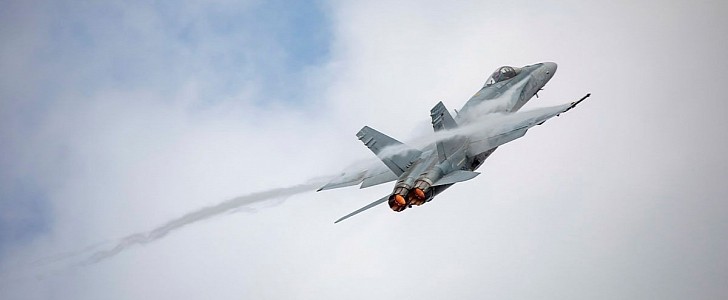The Royal Australian Air Force officially bid farewell to its fleet of F/A-18A/B Classic Hornets. The fighter jets have been deployed in various missions over the past decades since they've been in service with the air force. Now, it's time for aging aircraft to be replaced by the more capable fifth-generation F-35A Lightning II fighter.
On November 29th, the Royal Australian Air Force (RAAF) retired the remaining few active Classic Hornets. The momentous occasion was marked with a ceremony held at RAAF Base Williamtown in New South Wales. No. 75 Squadron, stationed at RAAF Base Tindal near Katherine in the Northern Territory, was the last squadron to transition to the F-35A.
The Hornets are multi-role fighter aircraft that can perform air-to-air and air-to-ground operations. They've entered service in 1985 and have proved to be a critical component of Australia's air combat capabilities. In total, the jets accumulated 408,000 of flight hours and have been deployed in multiple missions over the years.
During today's ceremony, F/A-18A/B pilot and Fighter Combat Instructor Air Marshal Hupfeld acknowledged the Classic Hornets' exceptional capabilities and commitment to Australia's air force:
"While I'm sad to see this incredible aircraft end its role as a sentinel of Australian skies, it's an exciting time for Air Force as we enter our second century with the F-35A delivering combat air power as part of a networked joint force, to assure the ADF's ability to deter or defeat threats to Australia's interests."
The F-35A is one of the most advanced fighter jets in the world. Its improved sensors and data fusion capabilities will enable it to collect more data and communicate faster and better with other Air Force aircraft. This will considerably improve the situational awareness and efficiency of the RAAF.
The F-35A boasts incredible speed, agility, and 9G maneuverability, making it capable of supersonic flight while retaining stealth. It is the best-suited aircraft to replace the aging Hornets.
Three operating squadrons at RAAF Base Williamtown and RAAF Base Tindal and a training squadron at RAAF Base Williamtown have committed to 72 F-35A aircraft. By 2023, all 72 aircraft are expected to be completely operational.
The Hornets are multi-role fighter aircraft that can perform air-to-air and air-to-ground operations. They've entered service in 1985 and have proved to be a critical component of Australia's air combat capabilities. In total, the jets accumulated 408,000 of flight hours and have been deployed in multiple missions over the years.
During today's ceremony, F/A-18A/B pilot and Fighter Combat Instructor Air Marshal Hupfeld acknowledged the Classic Hornets' exceptional capabilities and commitment to Australia's air force:
"While I'm sad to see this incredible aircraft end its role as a sentinel of Australian skies, it's an exciting time for Air Force as we enter our second century with the F-35A delivering combat air power as part of a networked joint force, to assure the ADF's ability to deter or defeat threats to Australia's interests."
The F-35A is one of the most advanced fighter jets in the world. Its improved sensors and data fusion capabilities will enable it to collect more data and communicate faster and better with other Air Force aircraft. This will considerably improve the situational awareness and efficiency of the RAAF.
The F-35A boasts incredible speed, agility, and 9G maneuverability, making it capable of supersonic flight while retaining stealth. It is the best-suited aircraft to replace the aging Hornets.
Three operating squadrons at RAAF Base Williamtown and RAAF Base Tindal and a training squadron at RAAF Base Williamtown have committed to 72 F-35A aircraft. By 2023, all 72 aircraft are expected to be completely operational.








